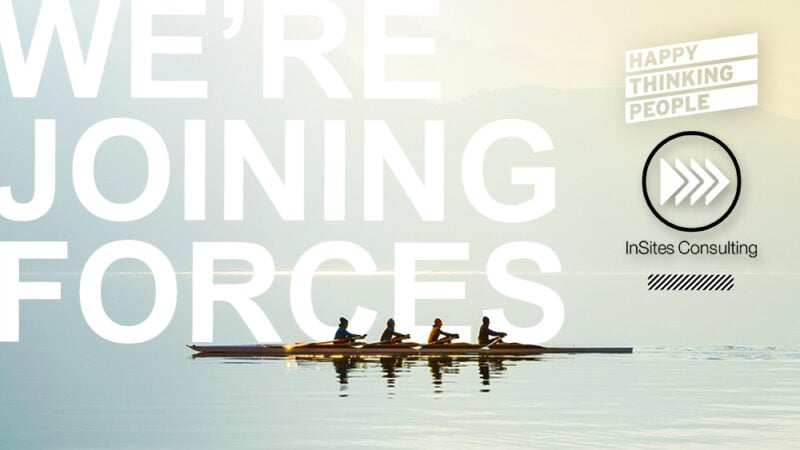What do clients think about the impact of market research?
As published on Greenbook on Thursday November 20, 2014. As a special addendum to the most recent wave of GRIT (Greenbook Research Industry Trends) report, we wanted to get a deeper understanding of the impact and effectiveness of market research studies from the client side perspective. Together with Greenbook and Gen2 Advisors we questioned 185 market research users (marketers and insights managers, excluding professional research providers) in our survey and reflected about their most recent market research study as well as their ideal study.
We share the results of this fascinating study around 3 uncovered facts linked to our profession.
#MRX Fact 1: We are not an adaptive system
An adaptive system is a flexible organism that changes its behavior in response to its environment. Such change is often required to improve performance or increase chances of survival. Consumers (our context and most important resource) have changed their behavior significantly over the last years. The surge of social media and mobile has been a major driving force behind consumers gaining power over brands. Accompanying consumer behavior (as a cause and result) such as participation, information contribution and sharing, social networking, brand liking, product reviewing, user collaboration and co-creation… has become the new ‘normal’ when it comes to consumer behavior.
Gradually, we see digital companies, marketers, software providers… move up to collaborate with consumers and achieve goals through them. Gone are the days when we sent out a message and waited for people to respond. Today, marketers need consumers to want to participate in brand activation and market through them, not to them. With 6 in 10 research users indicating they believe in proven and traditional methods, our study indicates that research and the use thereof may not have made that shift to the same extent and has not aligned with contemporary consumer behavior.
While survey research is mainly conducted online, there is a platform gap. Even though 19% of consumers fill out surveys on a mobile device (GRIT study 2014, Greenbook), only 5% of all surveys are actively programmed to be fit for mobile.
Qualitative research is mainly conducted offline. 1 in 2 research users still work with traditional focus groups or in-depth interviews. Online research communities are growing as a method, but only 19% of researchers actually uses research communities to learn from and collaborate with consumers.
It is not only the channels or platforms that are lagging but also the techniques and tools. Only 9% of quantitative projects apply creative research techniques – at best, surveys use graphical scales (36%). Despite the fact that gamification has been in vogue for quite a few years, leaderboards, badges, challenges and tasks, feedback systems or social interaction are hardly used in surveys. Still, gameplay, audio-visual or creative techniques allow getting a better and deeper understanding of consumer behavior. Such tactics allow for better engagement with participants which leads to a richer consumer understanding. The latter might explain why the picture is different in qualitative research: 81% of research users feels that qualitative research helps them engage with how consumers really live, while only 1 in 3 believe surveys are capable of bringing consumers to life.
#MRX Fact 2: We are not good storytellers
4 in 5 research users stated that the research output was actionable and readily usable for their marketing teams. An overwhelming 92% reported their research projects generate insights worth sharing with their colleagues. Great job, right? Yet only 65% actually share the results of their research internally. So it seems there is a lot of unused potential when it comes to leveraging research internally. In fact, the research we conduct does not seem conducive to telling a good story and it is not the start of a conversation. The majority of researchers use PowerPoint reporting to present the research results: 86%. A mere 22% have an interactive workshop to discuss the research findings and less than 10% use creative reporting formats such as interactive videos or infographics.
Related to our first fact, it would be better if research relied on content-rich methodologies and used creative communication channels to convey research results. All too often, we rely on numbers and text as well as single media. We need to combine video, photos, physical spaces (e.g. exhibitions), (private) social media, quizzes, infographics and apps. It would be so much more enriching to have consumers upload pictures and complete a mini-ethnographic self-description in a survey. Make sure you have the ingredients to tell a good story: use consumers as characters, describe their ‘who, what, when, where’ and also explain the ‘why (not)’ of their behavior.
It seems research users are satisfied yet not delighted or overly proud to share the results throughout their organization. So, the time is now to step up our game and create reporting formats that help research users share consumer stories with all internal stakeholders more easily.
#MRX Fact 3: We validate, but hardly make a real difference
The first two facts about the status of market research are linked to that fact that our profession is far from adaptive and lacks creativity in the way research projects are conducted; furthermore the (presentation) output is far from inspirational. Nonetheless, our data indicate that research users are quite proud of what they do and consider what they do as being great. Researchers even seem somewhat tenacious: if we had to run a similar project again, only less than 1 in 10 would advise a different approach. 86% of researchers believes their research leads to actionable results and 3 out 4 declare using the information of their study to steer very concrete actions. This is surprising, considering the fact that we admit that our research does not entirely allow us to engage with how consumers really live. Even stronger: we found that 60% (even 71% for surveys) of all research just confirms executives’ thinking and less than half of all research studies is perceived to generate surprising results (and for quantitative surveys we only generate surprise about 30% of the time). Only 1 in 2 projects lead to change within an organization.
It is our interpretation that these number are way too low if research wants a seat at the boardroom table. It is about time that we as researchers start to think and self-reflect on that. What service are we providing if we do not make a difference? If we are repeating ourselves continuously, then in the end, what is our value proposition?
Conclusion: we do not deliver on our own expectations
Based on a MaxDiff analysis we assessed what research users want the most. Choosing from 20 characteristics, research users composed their ideal study. By far the most important element was the research’s ability to ‘change the attitude and decisions of marketing executives’, followed by establishing a ‘good connection between researchers and marketers’. Next, ‘rigorous analysis’ and a ‘clear storyline’ shared a tied 3rd place in importance. Research as a positive touch-point experience for consumers which provides a ‘good consumer connection’ and results based on ‘a representative sample’ completed the top five of a study’s most desirable characteristics.
Interestingly, ‘low price’ research and the ‘use of proven traditional methods’ were the least important features of the ideal market research study. The agency’s ‘reputation’ or ‘collaboration with third parties’ were classified as less important overall – while ‘experience with the client’ and its ‘flexibility’ were more important.
But it is apparent there is a gap between what we ‘want’ and what we ‘do’. Contrasting the ideal characteristics of a market research study and our actual practice reveals a number of interesting gaps. First of all we underachieve in making the change happen in executives’ minds and actions, we do not provide systematic rigorous analyses, clearly underperform in creatively reporting research results and could do better at using innovative methods.
These findings are in line with previously discussed facts and provide clear guidance to researchers as to what to focus on to make a difference. However, we can learn quite a bit from our ultimate clients – the marketers. It is our firm belief that market research results should be managed along the lines of content marketing (based on Insight as Content, presented by Niels Schillewaert and Mark Uttley at IIeX 2014 in Atlanta). While research findings are our core product, we do not manage it as a ‘product’ or ‘service’. We are actually bad at marketing it – we do not think about its promotion, distribution and delivery, let alone about the ‘experience’ marketers go through when utilizing it. At best, we are good at delivering findings based on solid methods and representative samples. We should make the presentation of results to be more ‘experiential’. If executives feel consumer realities, experience the findings and co-create the implications, they will feel ownership and we can extend the shelf-life as well as the impact of our work.
There are systematic steps a researcher should take in order to treat insight as content.
- PLAN – define the goals, develop a strategy and create a calendar.
- DO – install research methodologies that allow for a structural collaboration with your consumers, but make sure you produce content-rich observations.
- FEEL – market your findings, as if you launch a product. Because of the very end goal of research, it is best to promote your findings experientially. If executives experience the data, it will amplify the usage and impact of research.
- REVIEW – analyze and measure the impact of what you are doing.
Installing a virtuous circle of treating insight as content will make your insights go viral in your company and enter the consciousness of your executives.




